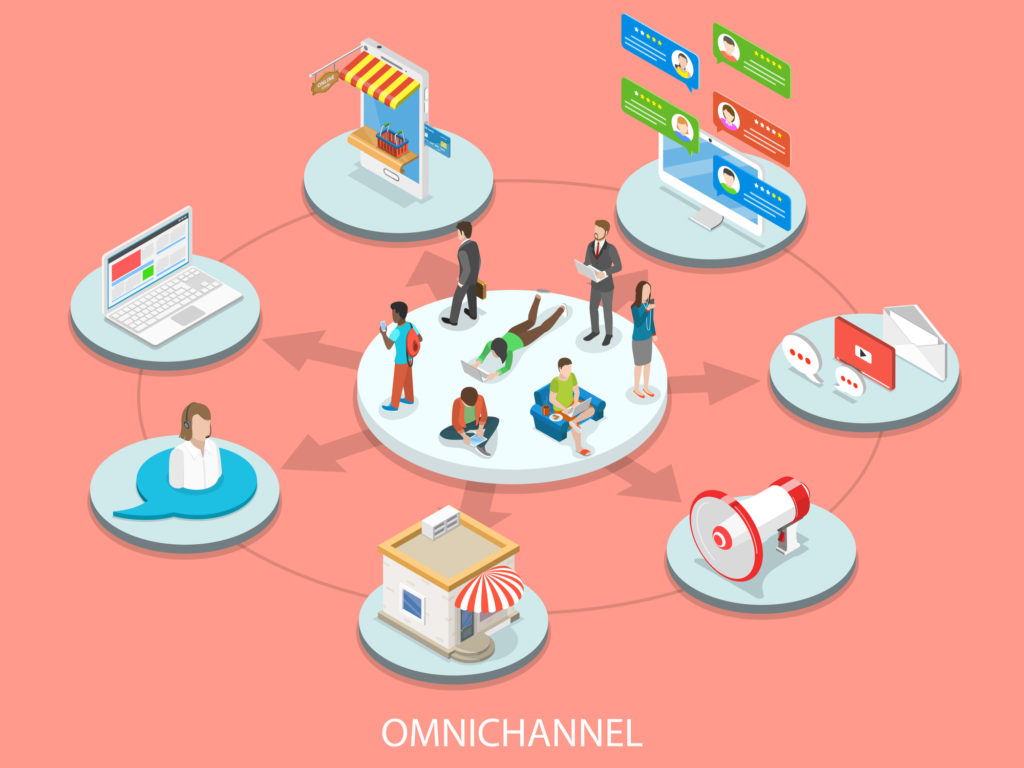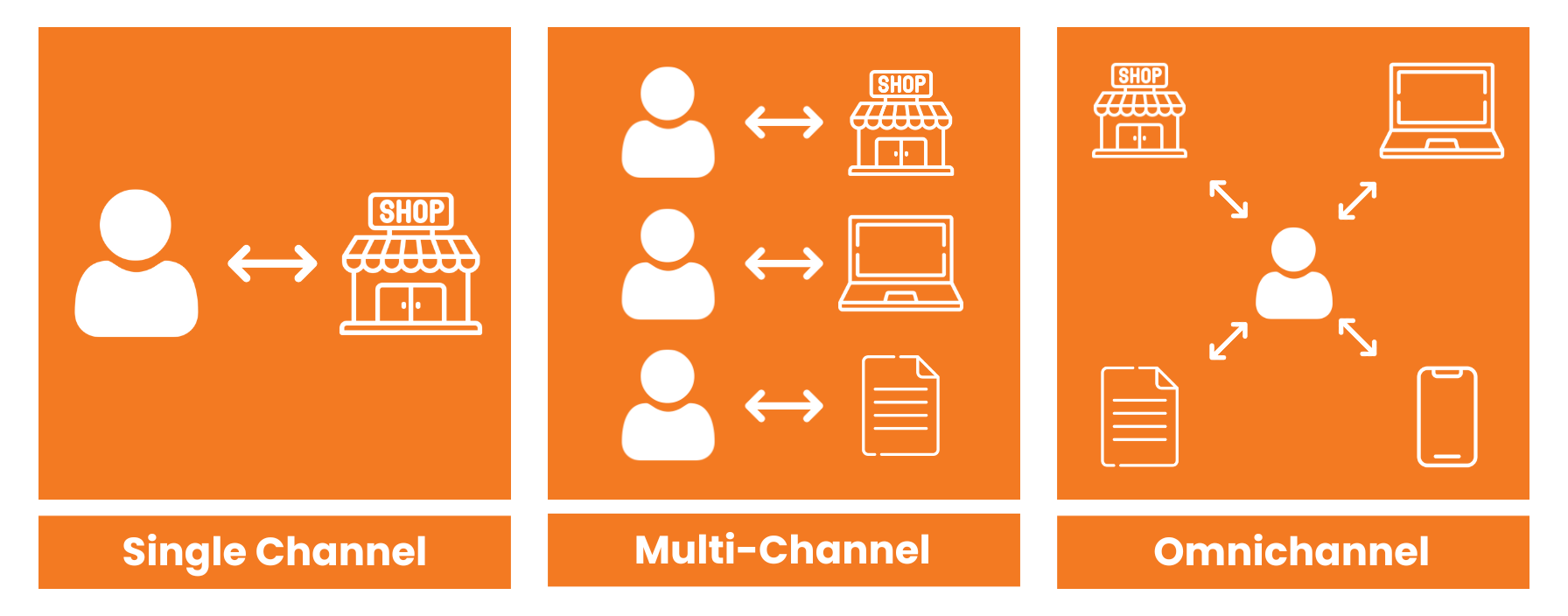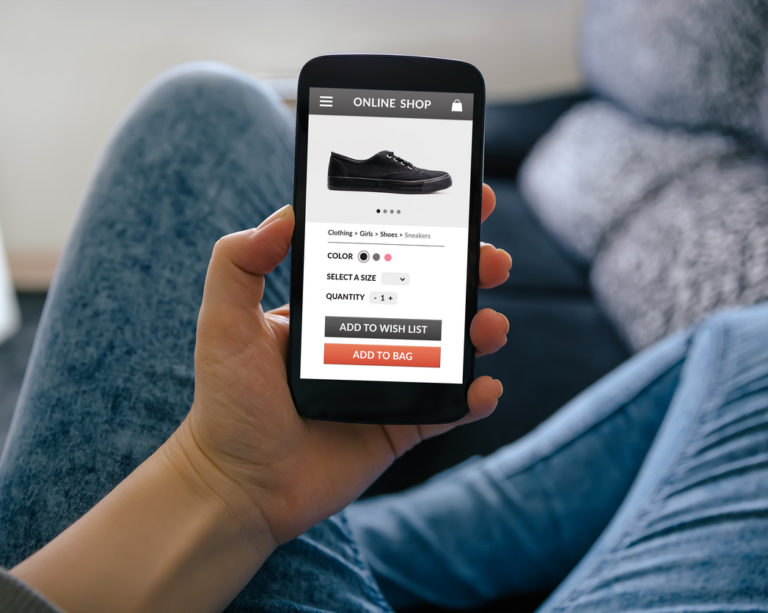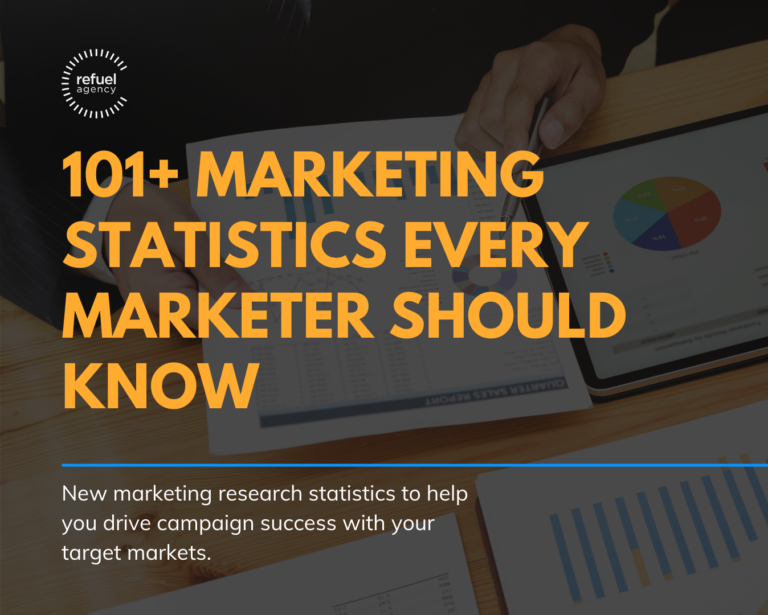The sheer number of marketing channels available to reach customers today makes tracking your customer’s buyer journey a challenging task. That’s where an omnichannel marketing strategy comes into play – a strategy that places your customer in the center of your marketing channels. So let’s find out: what exactly is an omnichannel marketing strategy, and how can it help you drive repeat impressions, brand awareness, and sales?

Omnichannel marketing strategy vs. Single-channel and multichannel marketing strategy
Single channel and multichannel marketing strategies focus on the interactions that customer have with various marketing channels. As you can see in the image above, the goal of a multichannel marketing approach is to distribute the marketing message through as many channels as possible. The result is often a disjointed customer experience that is difficult for marketers to track.

An omnichannel marketing strategy, on the other hand, places the customer at the center, ensuring a unified shopping experience at every touch point. While a multichannel approach views more marketing channels as more ways to reach the customer, the omnichannel approach views more channels as a way to remove friction and increase consistency – which in turn, builds brand loyalty.
Marketing strategy in practice: Best Buy
So what does an example of an omnichannel marketing strategy look like?
This case study outlines how Best Buy exemplifies how omnichannel approaches effectively blurs the lines between the digital and the physical shopping experience to increase online and in-store sales.
As shoppers browse the Best Buy website, Best Buy highlights their products’ in-store availability through location targeting, encouraging shoppers to pick up the product in-store to get it the same day. In-store shoppers can use Best Buy’s in-app scanner to compare product features and pricing. And if mobile app shoppers leave an item in their cart and later visit a Best Buy retail location, shoppers will receive a mobile push notification letting the shopper know that their selected item is available in the store they’re in.
See? Seamless.
As a result, Best Buy reported seven consecutive quarters of growth. Additionally, their online sales continue to grow quarter over quarter, indicating their true digital health.
How can an omnichannel marketing strategy benefit you?
An omnichannel marketing strategy acknowledges that today’s consumers are bombarded with advertisements every moment of their day, and that they choose to purchase from brands who listen to them, understand them, and treat them well. An omnichannel marketing strategy achieves this by putting the customer at the center of the marketing experience and ensuring that marketing channels improve the buyer journey by removing friction and making the buyer feel understood.
Research shows that companies that prioritize the customer experience generate 60% higher profits than their competitors. And, we know that companies with well-defined omnichannel marketing strategies achieve a 91% higher year-over-year increase in customer retention rate on average (compared to companies without this strategy in place).
After all, well-nurtured leads turn into happy customers. Happy customers make repeat purchases. Repeat purchasers make valuable referrals. And all these loyal customers are much easier and cheaper than acquiring new customers.
Ready to boost repeat impressions and win loyal customers in teen, college, and military audiences? Contact us today to get your omnichannel marketing strategy started.




